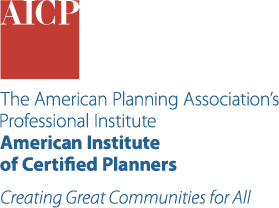Global Perspectives
Rethinking Metropolitan Governance for Inclusive Planning in Germany’s Kinzig Valley

This Global Perspectives blog series draws from a curated collection of over 75 influential urban planning journals published worldwide, meticulously compiled to foster global communication and enrich collaborative planning discourse. By highlighting groundbreaking research, innovative methodologies, and case studies from diverse contexts — spanning each continent — these posts aim to facilitate knowledge transfer, explore cutting-edge developments, and share contextually relevant solutions that address shared urban challenges and shape the future of planning practice.
In Germany's Kinzig Valley, some municipal voices liken their communities to ships "sailing along in the shadow of the metropolitan region." They cherish their rural roots, far from the anonymity and hustle and bustle of nearby Frankfurt, yet they revel in being well-connected to the city's networks.
This duality — rural pride paired with urban reliance — mirrors the experience of small towns worldwide. For planners, it's a puzzle worth solving: how do we integrate these places into metropolitan governance without compromising their unique identities?
Small towns are more than just footnotes in the metropolitan story. In the United States, while megacities grab headlines, many smaller communities are tied into metropolitan statistical areas, drawing economic vitality from nearby urban hubs.

Germany's Kinzig Valley (Google Earth image © 2025)
The Census Bureau notes that a significant share of Americans live in places with fewer than 25,000 residents, many of which are nestled within broader metropolitan regions. As these regions swell, planners face the challenge of ensuring small towns aren't sidelined in the rush toward regional coordination.
Small towns often define themselves by what they're not — the chaotic urban core — while leaning on metropolitan resources to thrive. In their study, "Towards Cooperation? Reflections on Spatial Narratives and Imaginaries Regarding Interrelations Between Small Towns and Metropolitan Cores," Yane Conradi and Inga Bolik interviewed Kinzig Valley representatives who voiced this tension. "We're rural, but we're not isolated," they might say, highlighting both independence and interdependence.
It's a narrative that resonates globally: Small towns want the perks of proximity — jobs, infrastructure, services — without losing their sense of place.
This balancing act puts planners in a tricky spot. Metropolitan governance often prioritizes efficiency, streamlining decisions across sprawling regions. But small towns? They're fighting to keep their voices heard and their identities intact. The question isn't just academic — it's a practical dilemma playing out in planning offices everywhere.
Governance in Action: A Global Glimpse
Around the world, small towns navigate metropolitan systems in varied ways. In England, Combined Authorities unite local governments for strategic planning and economic growth. Small towns join the table via district councils, though their influence can feel diluted next to Inplayers.
In France, the "métropunites" framework ties together various tools, such as the Inter-municipal Local Plan for Urbanism (PLUI), guiding spatial decisions. Small towns can gain traction here, especially when mayors band together, though suburban resistance sometimes fragments the effort. Italy's "città metropolitane," launched in 2014, are still finding their footing, with small towns caught in the slow rollout of metropolitan planning.
These insights, drawn from "European Small Towns: What Role Do They Play in Metropolitan Governance?" by Giancarlo Cotella, Christophe Demazière, Sebastian Dembski, and Loris Servillo, show how small towns fit — or don't — into regional frameworks. Each system reveals a shared struggle: aligning local needs with metropolitan goals.
Planning Smarter: Ideas for Inclusion
Key Takeaways
What's the takeaway for planners? It's about crafting governance that doesn't steamroll small towns. Here are some ideas to consider:
- Give them a seat: Push for structures that guarantee small towns a say — think reserved spots on councils or dedicated rural task forces.
- Flex the rules: Use planning tools that adapt to local quirks. France's PLUI, for instance, lets towns collaborate on shared goals without losing their flavor.
- Fund their future: Channel metropolitan resources into small-town projects — think heritage preservation or local economic boosts.
- Amplify their story: Help small towns tell their tale. A strong narrative, like Kinzig Valley's, can anchor their role in the region.
These aren't one-size-fits-all fixes. Governance needs to flex with the context, ensuring small towns aren't just along for the ride but helping steer the ship.
Metropolitan regions aren't slowing down, and small towns will keep shaping their edges. Planners have a chance to rethink how these places fit into the puzzle — active partners, not just quiet neighbors.
The Kinzig Valley's leaders put it best: they're "well provided for" by metropolitan ties, but they want to stay "well connected" to their roots. That's the challenge — and the opportunity — for planners everywhere. How do we build systems that deliver regional wins without leaving small towns in the shadows?
Related Research
- "Towards Cooperation? Reflections on Spatial Narratives and Imaginaries Regarding Small Town and Metropolitan Cores Interrelations" (European Journal of Spatial Development, Vol. 21, No. 3, 2024) Yane Conradi and Inga Bolik.
- "European Small Towns: What Role do they Play in Metropolitan Governance" (European Journal of Spatial Development, Vol. 21, No. 3, 2024) Giancarlo Cotella, Christophe Demaziere, Sebastian Dembski, and Loris Servillo.
- "Latest City and Town Population Estimates of the Decade Show Three-Fourths of the Nation's Incorporated Places have Fewer than 5,000 People" (United States Census Bureau, 2020), Amel Toukabru and Lauren Medina.
Top image: iStock/Getty Images Plus/ Simon Dux
ABOUT THE AUTHOR


